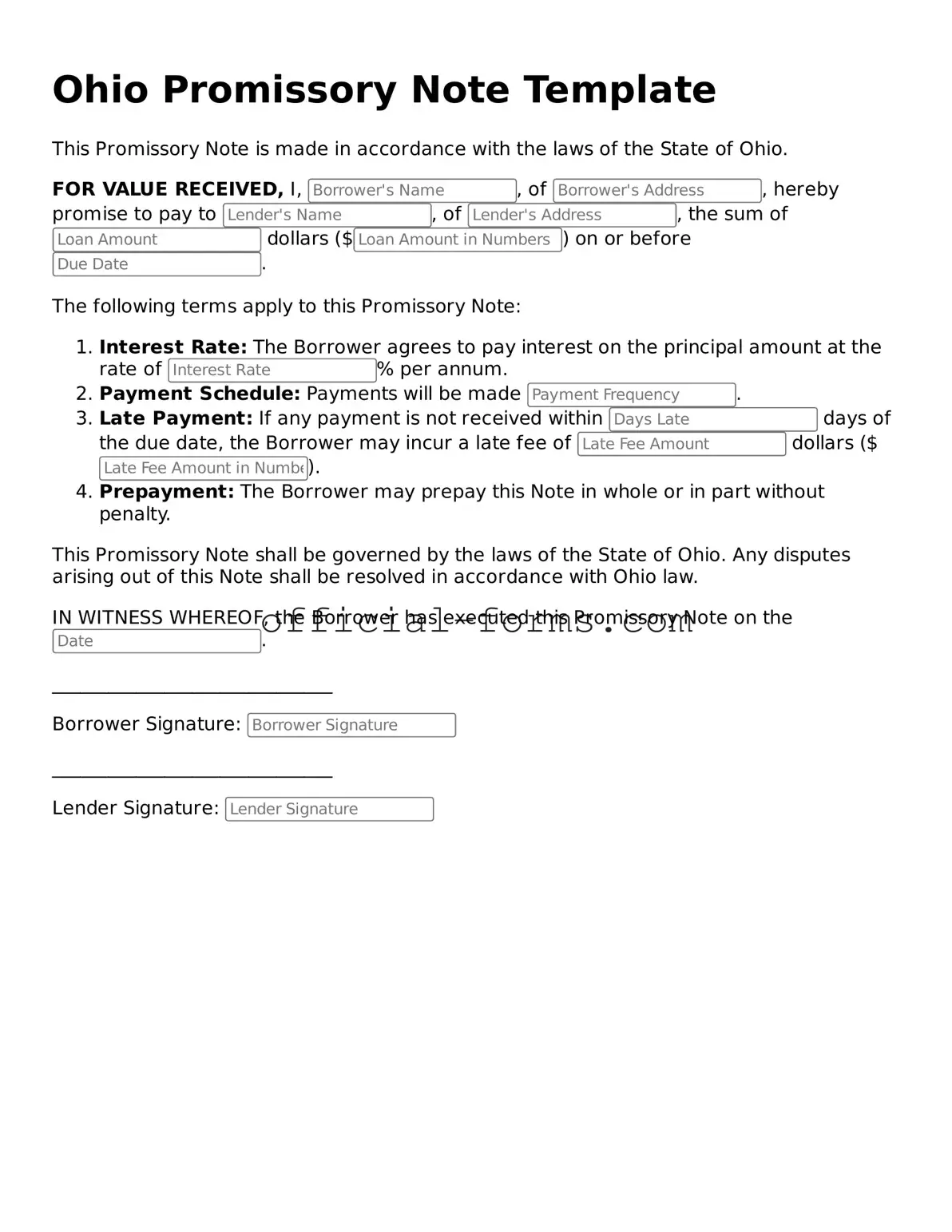Filling out an Ohio Promissory Note form can seem straightforward, but many people make common mistakes that can lead to confusion or even legal issues down the line. Understanding these pitfalls can save you time and ensure your document is valid. Let's explore seven frequent errors that individuals encounter.
One of the most common mistakes is failing to include all necessary parties. A Promissory Note typically requires the names and addresses of both the borrower and the lender. Omitting this information can create ambiguity about who is responsible for repayment. Always double-check that you’ve included complete and accurate details for everyone involved.
Another frequent error is neglecting to specify the loan amount clearly. It's crucial to write the amount in both numerical and written form. For example, if you are borrowing $5,000, you should write "Five Thousand Dollars ($5,000)." This redundancy helps prevent misunderstandings regarding the amount borrowed.
Many people also overlook the importance of detailing the interest rate. This is a key component of any loan agreement. If you leave this blank or write it ambiguously, you may face disputes later. Clearly stating the interest rate ensures that both parties have the same expectations regarding repayment.
Additionally, the repayment terms must be articulated clearly. This includes specifying the due date, the frequency of payments, and the method of payment. Vague terms can lead to confusion and disagreements. Make sure to outline these details explicitly to avoid any future complications.
Another common mistake involves failing to date the document. A Promissory Note must be dated to establish when the agreement begins. Without a date, it can be challenging to determine the timeline for repayment, which could lead to misunderstandings or disputes.
People often forget to sign the document. While this may seem obvious, it’s a critical step. A Promissory Note is not legally binding unless it is signed by the borrower. Ensure that all necessary signatures are included before finalizing the document.
Lastly, many individuals do not keep a copy of the signed Promissory Note. After signing, it’s essential to retain a copy for your records. This serves as proof of the agreement and can be invaluable in the event of a dispute. Always make sure both parties have copies of the signed document.
By being aware of these common mistakes, you can navigate the process of filling out an Ohio Promissory Note more effectively. Attention to detail will help ensure that your agreement is clear, binding, and free from misunderstandings.
